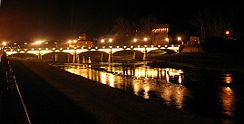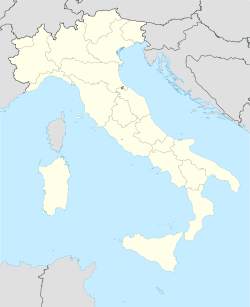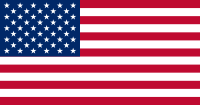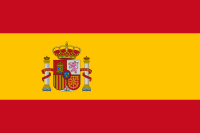Parma
| Comune di Parma | |
|---|---|
 |
|
 |
|
| Country | |
| Region | Emilia-Romagna |
| Province | Parma (PR) |
| Mayor | Pietro Vignali |
| Elevation | 55 m (180 ft) |
| Area | 260 km² (100.4 sq mi) |
| Population (as of December 31, 2007) | |
| - Total | 178,718 |
| - Density | 687/km² (1,779/sq mi) |
| Time zone | CET, UTC+1 |
| Coordinates | |
| Gentilic | Parmigiani (Pram'zan) (Parmensi (Arijoz) are called the province's inhabitants) |
| Dialing code | 0521 |
| Postal code | 43100 |
| Frazioni | See list |
| Patron | Sant'Ilario di Poitiers, Sant'Onorato, San Rocco |
| - Day | January 13 |
| Website: www.comune.parma.it | |

Parma is a city in the Italian region of Emilia-Romagna famous for its architecture and the fine countryside around it. It is the home of the University of Parma, one of the oldest universities in the world. Parma is divided into two parts by the little stream with the same name. The Italian poet Attilio Bertolucci (born in a hamlet in the countryside) wrote: "As a capital city it had to have a river. As a little capital it received a stream, which is often dry".
Contents |
History
Prehistory
Parma was already a built-up area in the Bronze Age. It has verified by now that in the current position of the city rose a "terramare". The "terramare" (Earthsea) were ancient villages in structural wood on pile-dwelling built according to a defined scheme and squared form, built on the dry land, generally in proximity of the rivers. During this age (among the 1500 BC and the 800 BC) the first necropolises (placed where stand the present-day Piazza Duomo and Millstone Square) rose also.
Ancient age
The city was most probably founded and named by the Etruscans, for a parma (circular shield) was a Latin borrowing, as were many Roman terms for particular arms, and Parmeal, Parmni and Parmnial are names that appear in Etruscan inscriptions. Diodorus Siculus (XXII, 2,2; XXVIII, 2,1) reported that the Romans had changed their rectangular shields for round ones, imitating the Etruscans. Whether the Etruscan encampment was so named because it was round, like a shield, or whether its situation was a shield against the Gauls to the north, is more a matter of choice.
The Roman colony was founded in 183 BC, together with Mutina (Modena). 2000 families were settled. Parma had a certain importance as a road hub over the Via Aemilia and the Via Claudia. It had a forum, in what is today the central Garibaldi Square. In 44 BC, the city was destroyed, and Augustus rebuilt it. During the Roman Empire it gained the title of Julia for its loyalty to the imperial house.
The city was subsequently sacked by Attila, and later given by the barbarian king Odoacer to his fellows. During the Gothic War, however, Totila destroyed it. It was then part of the Byzantine Exarchate of Ravenna (changing name to Chrysopolis, "Golden City", probably due to the presence of the army's treasure) and, from 569, of the Lombard Kingdom of Italy. During the Middle Ages, Parma became an important stage of the Via Francigena, the main road connecting Rome to Northern Europe: several castles, hospitals and inns were built in the following centuries to host the increasing number of pilgrims.
Middle Ages
Under the Frankish rule, Parma became the capital of a county (774). Like most northern Italian cities, it was nominally a part of the Holy Roman Empire created by Charlemagne, but locally ruled by its bishops, the first being Guidobus. In the subsequent struggles between the Papacy and the Empire, Parma was usually a member of the Imperial party. Two of its bishops became antipopes: Càdalo, founder of the cathedral, as Honorius II); and Guibert, as Clement III). An almost independent commune was created around 1140. After the Peace of Constance (1183), quarrels with the neighbouring communes of Reggio Emilia, Piacenza and Cremona became harsher with the aim of controlling the vital trading line over the Po River.
The struggle between Guelphs and Ghibellines was a feature of Parma too. In 1213, her podestà was the Guelph Rambertino Buvalelli. Then, after a long stance alongside the emperors, the Papist families of the city gained control in 1248. The city was besieged by Emperor Frederick II, who was however crushed in the battle that ensued.
Modern era
Parma fell under the control of Milan in 1341. After a short-lived period of independence under the Terzi family (1404-1409), Sforza imposed their rule (1440-1449) through their associated families of Pallavicino, Rossi, Sanvitale and Da Correggio. These created a kind of new feudalism, building towers and castles throughout the city and the land. These fiefs evolved into truly independent states: the Landi governed the higher Taro's valley from 1257 to 1682. The Pallavicino seignory extended over the eastern part of today's province, with the capital in Busseto. Parma's territories were an exception for Northern Italy, as its feudal subdivision frequently continued until more recent years. For example, Solignano was a Pallavicino family possession until 1805, and San Secondo belonged to the Rossi well into the 19th century.

Between the 14th and the 15th centuries, Parma was at the centre of the Italian Wars. The Battle of Fornovo was fought in its territory. The French held the city in 1500–1521, with a short Papal parenthesis in 1512–1515. After the foreigners were expelled, Parma belonged to the Papal States until 1545.
In that year the Farnese pope, Paul III, detached Parma and Piacenza from the Papal States and gave them as a duchy for his illegitimate son, Pier Luigi Farnese, whose descendants ruled in Parma until 1731, when Antonio Farnese (1679-1731), last male of the Farnese line, died. The state was consolidated by Ottavio II Farnese (1547-1586). He also renovated the city's structures to create a true capital for his little but rich reign.
In 1594 a Constitution was emanated, the University enhanced and the Nobles' College founded. The war to reduce the barons' power continued for several years: in 1612 Barbara Sanseverino was executed in the central square of Parma, together with six other nobles charged of plotting against the duke. At the end of the 17th century, after the defeat of Pallavicini (1588) and Landi (1682) the Farnese duke could finally hold with firm hand all Parmense territories. The castle of the Sanseverino in Colorno was turned into a luxurious summer palace by Ferdinando Bibiena.

In 1731 the combined Duchy of Parma and Piacenza was given to the House of Bourbon in a diplomatic shuffle of the European dynastic politics that were played out in Italy. Under the new rulers, however, it faced a certain decadence. In 1734 all the outstanding art collections of the duke's palaces of Parma, Colorno and Sala Baganza were moved to Naples.
Parma was under French influence after the Peace of Aachen (1748). Parma became a modern state with the energetic action of prime minister Guillaume du Tillot. He created the bases for a modern industry and fought strenuously against the church's privileges. The city lived a period of particular splendour: the Palatine Library, the Archaeological Museum, the Picture Gallery and the Botanical Garden were founded, together with the Royal Printing Works directed by Giambattista Bodoni.
Contemporary age
During the Napoleonic Wars (1802-1814), Parma was part of the Taro Département. Under its French name Parme, it was also created a duché grand-fief de l'Empire for Charles-François Lebrun, duc de Plaisance, the Emperor's Arch-Treasurer, on 24 April 1808 (extinguished 1926).
After its restoration by the 1814-15 Vienna Congress, the Risorgimento's upheavals had no fertile ground in the tranquil duchy. In 1847, after Marie Louise, Duchess of Parma's death, it passed again to the Bourbons, the last of whom was stabbed in the city and left it to his Widow, Luisa Maria of Berry. On September 15, 1859 the dynasty was declared deposed, and Parma entered in the newly formed provinces of Emilia under Carlo Farini. With the plebiscite of 1860 the former duchy became part of the unified Kingdom of Italy.
The loss of the capital role provoked an economical and social crisis in Parma. It started to recover its role of industrial prominence after the connection with Piacenza and Bologna of 1859, and with Fornovo and Suzzara in 1883. Trade unions were strong in the city, in which a famous General Strike was declared from May 1 to June 6, 1908. The struggle with Fascism lived its most dramatic moment in the August 1922, when the regime officer Italo Balbo attempted to enter in the popular quarter of Oltretorrente. The citizens organized into the Arditi del Popolo ("People's assaulters") and pushed back the squadristi. This episode is considered the first example of Resistance in Italy.
During World War II, Parma was a strong centre of partisan resistance. The train station and marshalling yards were targets for high altitude bombing by the Allies in the spring of 1944. Much of the Palazzo della Pilotta — situated near the train station — was destroyed by errant bombs, but Parma did not see widespread destruction during the war. Parma was liberated of the German occupation (1943-1945) on April 26, 1945 by the partisan resistance and troops of Brazilian Expeditionary Force [1].
Main sights
Churches



- The Romanesque Cathedral houses both 12th century sculpture by Benedetto Antelami and a 16th century fresco masterpiece by Antonio da Correggio.
- The Baptistery, adjacent to the cathedral was begun in 1196 by Antelami.
- Church of Saint John the Evangelist of Parma, built between 1498 and 1510 behind the Cathedral's apse. It has Baroque facade and belfry, with a Latin cross plant and three naves. In 1520–1522, Correggio frescoed the dome with the Vision of St. John the Evangelist, a highly influential fresco which heralded illustionistic perspective in the decoration of church ceilings. Chapel frescoes by Parmigianino. Also the cloisters and the ancient Benedictine grocery are noteworthy. The library has books from the 15th and 16th centuries.
- Sanctuary of Santa Maria della Steccata.
- The Benedictine Monastery of San Paolo, founded in the 11th century. It houses precious frescoes by Correggio, in the so-called Camera di San Paolo (1519-1520), and Alessandro Araldi.
- The Gothic church of San Francesco del Prato (13th century). Until the 1990s it was the city's jail
Palaces
- The Palazzo della Pilotta (1583). It houses the Academy of Fine Arts with artists of the School of Parma, the Palatine Library, the National Gallery, the Archaeological Museum, the Bodoni Museum and the Farnese Theatre.
- The Ducal Palace, built from 1561 for Duke Ottavio Farnese on a design by Jacopo Barozzi da Vignola. Built on the former Sforza castle area, it was enlarged in the 17th-18th centuries. It includes the Palazzo Eucherio Sanvitale, with interesting decorations dating from the 16th centuries and attributed to Gianfrancesco d'Agrate, and a fresco by Parmigianino. Annexed is the Ducal Park also by Vignola. It was turned into a French-style garden in 1749.
- The Palazzo del Comune, built in 1627.
- The Palazzo del Governatore ("Governor's Palace"), dating from the 13th century.
- The Bishop's Palace (1055).
- Ospedale Vecchio ("Old Hospital"), created in 1250 and later renovated in Renaissance times. It is now home to the State Archives and to the Communal Library.
Other
- The Teatro Farnese was constructed in 1618–1619 by Giovan Battista Aleotti, totally in wood. It was commissioned by Duke Ranuccio I for the visit of Cosimo I de' Medici.
- The Cittadella, a large fortress erected in the 16th century by order of Duke Alessandro Farnese, close to the old walls.
- The Pons Lapidis (also known as Roman Bridge or Theoderic's Bridge), a Roman structure in stone dating from Augustus reign.
- The Orto Botanico di Parma is a botanical garden maintained by the University of Parma.
- The Teatro Regio ("Royal Theatre"), built in 1821–1829 by Nicola Bettoli. It has a Neo-Classical facade and a porch with double window order. It is the city's opera house.
- The Auditorium Niccolò Paganini, designed by Renzo Piano.
- The Museum House of Arturo Toscanini, where the famous musician was born.
- Museo Lombardi. It exhibits a prestigious collection of art and historical items regarding Maria Luigia of Habsburg and her first husband Napoleon Bonaparte; important works and documents concerning the Duchy of Parma in the 18th and 19th centuries are also kept by the Museum.
Frazioni
Alberi, Baganzola, Beneceto, Botteghino, Ca'Terzi, Calestani, Carignano, Carpaneto, Cartiera, Casalbaroncolo, Casalora di Ravadese, Casaltone, Case Capelli, Case Cocconi, Case Crostolo, Case Nuove, Case Rosse, Case Vecchie, Casino dalla Rosa, Casagnola, Castelletto, Castelnovo, Cervara, Chiozzola, Coloreto, Corcagnano, Eia, Fontanini, Fontanellato, Gaione, Ghiaiata Nuova, Il Moro, La Catena, La Palazzina, Malandriano, Marano, Marore, Martorano, Molino di Malandriano, Osteria San Martino, Panocchia, Paradigna, Pedrignano, Pilastrello, Pizzolese, Ponte, Porporano, Pozzetto Piccolo, Quercioli, Ravadese, Ronco Pascolo, Rosa, San Prospero, San Ruffino, San Secondo, Sissa, Soragna, Valera, Viarolo, Viazza, Vicofertile, Vicomero, Vigatto, Vigheffio, Vigolante.
Demographics
In 2007, there were 177,069 people residing in Parma located in the province of Parma, Emilia-Romagna, of whom 47.4% were male and 52.6% were female. Minors (children ages 18 and younger) totalled 14.87 percent of the population compared to pensioners who number 22.90 percent. This compares with the Italian average of 18.06 percent (minors) and 19.94 percent (pensioners). The average age of a Parma resident is 46 compared to the Italian average of 42. In the five years between 2002 and 2007, the population of Parma experienced 6.97% growth, while Italy as a whole grew by 3.56 percent.[2][3] The current birth rate of Parma is 8.53 births per 1,000 inhabitants compared to the Italian average of 9.45 births.
As of 2006, 90.91% of the population was Italian. The largest foreign group came from other parts of Europe (namely Albania, Romania, and Ukraine): 3.61%, followed by sub-saharan Africa (namely Ghana): 1.86%, and North Africa: 1.44. Approximately 17.9 percent of newborns has at least one parent of foreign origins, compared to the Italian average of 10.3%.[4]
Food
Parma is famous for its food: Parmigiano Reggiano cheese (also produced in Reggio Emilia), Prosciutto di Parma (Parma ham). In 2004 Parma was appointed the seat of the European Food Safety Authority (EFSA). Parma also has two food multinationals, Barilla and Parmalat.
Sister cities
 Shijiazhuang, China
Shijiazhuang, China Milwaukee, United States
Milwaukee, United States Guadalajara, Spain
Guadalajara, Spain Bourg-en-Bresse, France
Bourg-en-Bresse, France Tours, France
Tours, France Ljubljana, Slovenia
Ljubljana, Slovenia Worms, Germany
Worms, Germany Szeged, Hungary
Szeged, Hungary Moncton, Canada
Moncton, Canada Stockton, United States
Stockton, United States
Sport
Parma F.C. was founded in 1913. It is a Serie B football club renowned in Italy and Europe for its successes including three national cups, a European Cup Winner's Cup, two UEFA Cups, a European Supercup and an Italian Supercup. It plays in the city's stade Ennio Tardini which used to host up to 29,000 spectators but is being renovated in 2008 after the club was demoted to Serie B. Also volleyball, women basketball, rugby union and baseball have large popularity in the city and have scored relevant successes.
Parma is also home to two rugby union teams in the top national division, Overmach Rugby Parma and SKG Gran Rugby.
Famous people

Painters and sculptors
- Francesco Mazzola, best known as Il Parmigianino, painter
- Sisto Badalocchio, painter
- Alessandro Araldi, painter
- Michelangelo Anselmi, painter born in Tuscany
- Giovanni Maria Francesco Rondani, painter
- Girolamo Mazzola Bedoli, painter
- Filippo Mazzola, painter
- Antonio da Correggio (Antonio Allegri), painter born in Correggio (Reggio Emilia)
- Benedetto Antelami
- Giacomo (or Jacopo) Zanguidi ( Bertoia)
- Giovan Federico Bonzagni
- Amedeo Bocchi
- Bartolomeo Schedoni
- Oreste Carpi
Others
- Giambattista Bodoni, typographer
- Ferdinando Paer, composer
- Giuseppe Verdi, opera composer
- Arturo Toscanini, conductor
- Bernardo Bertolucci, director
- Giovannino Guareschi, writer
- Alessandro Cortini, musician
- Vittorio Bottego, explorer
- Attilio Bertolucci, poet
- Alexander Farnese, Duke of Parma, military commander
- Christopher Padreddii, writer, Co-chairman Fratelli D'Italia
- Anthony Beschizza, co-chair Fratelli D'Italia
- Cleofonte Campanini, conductor
See also
- European College of Parma
External links
- The European Food Safety Authority Website
- Parma travel guide from Wikitravel
- The best of Parma
- Parma's view from satellite (Google Earth)
- 360° photos of City of Parma
- Video Introduction to Parma and the Parmigiano Reggiano
- Video Brief History of Parma
|
|||||||
